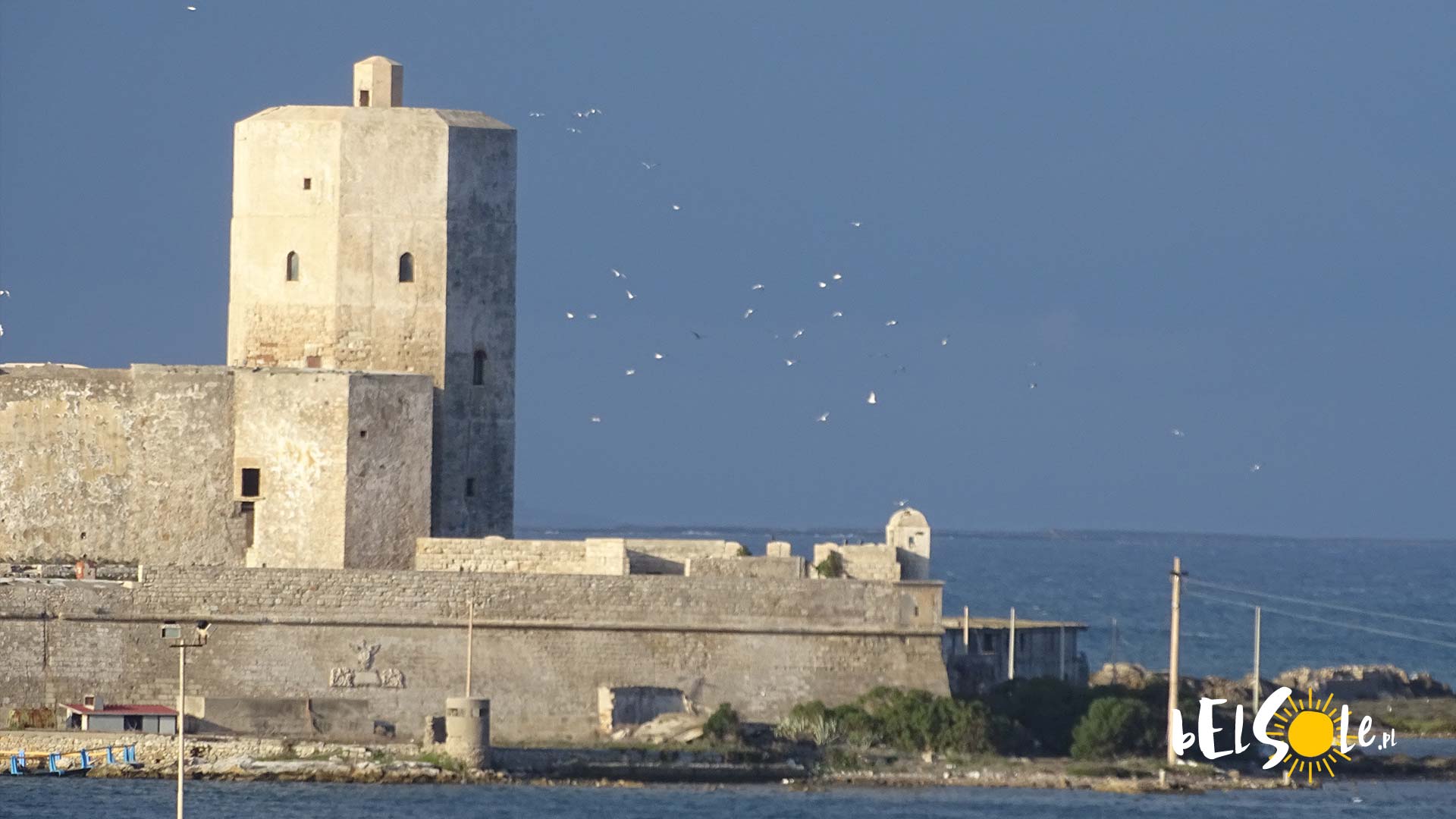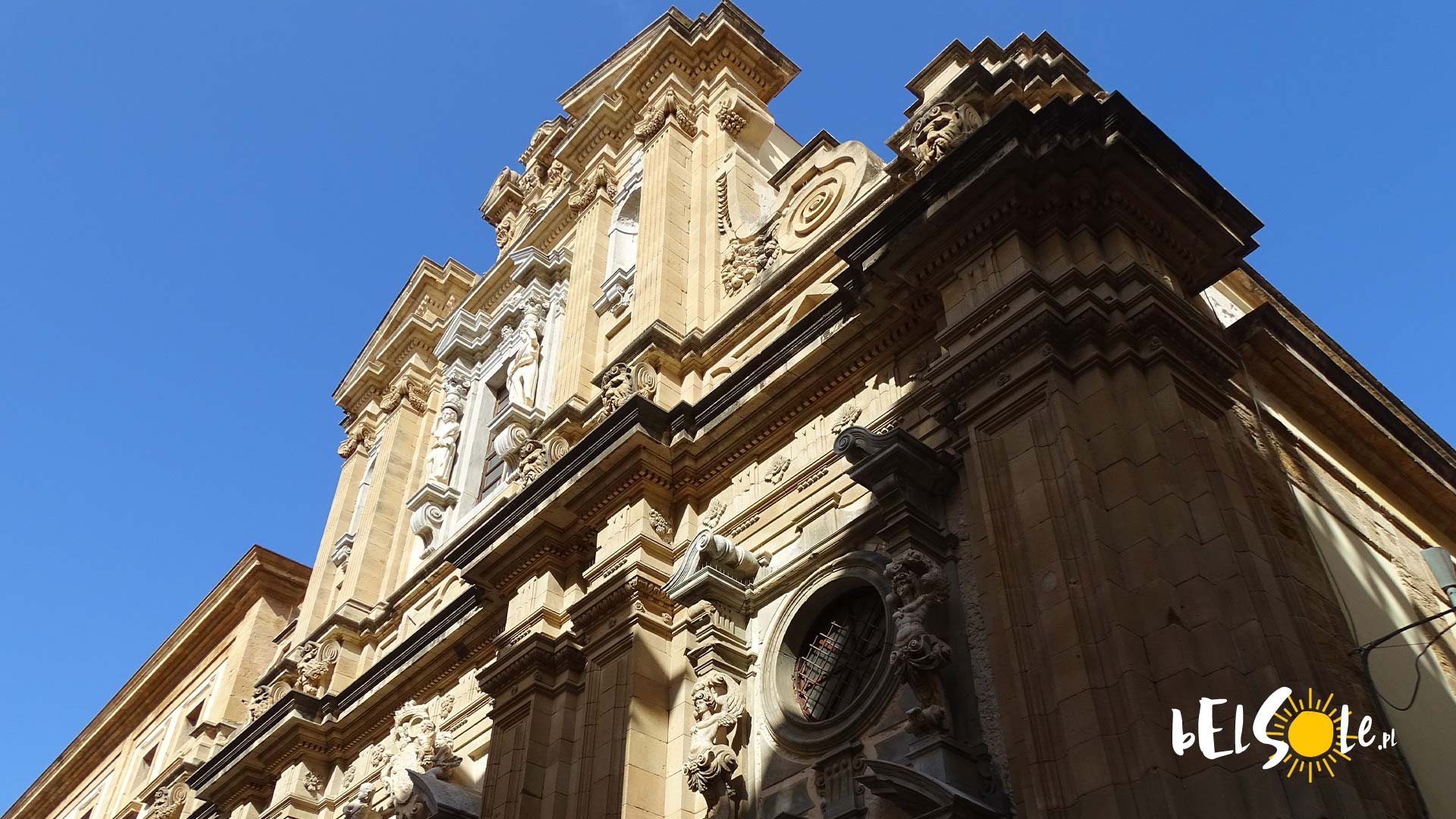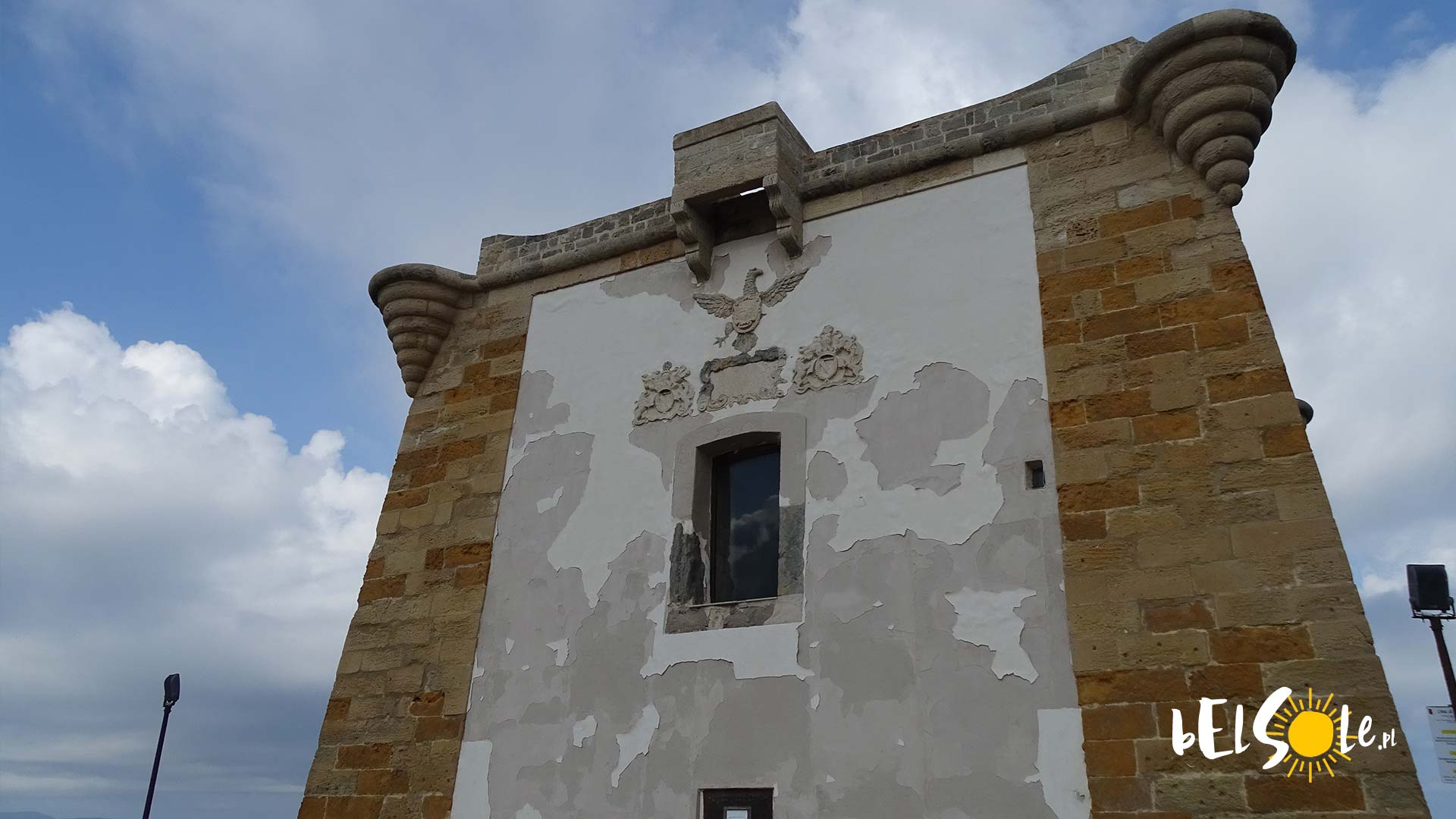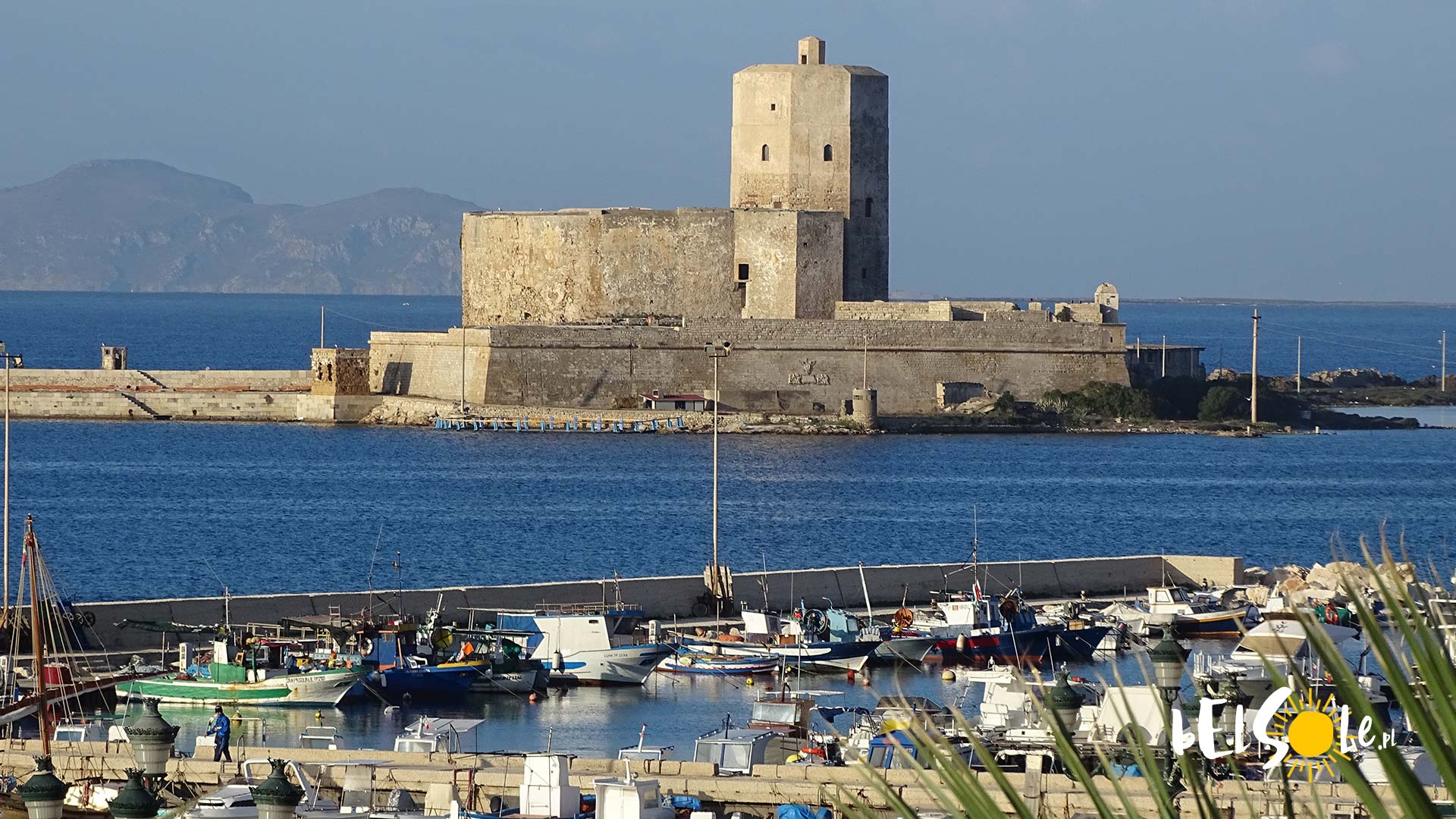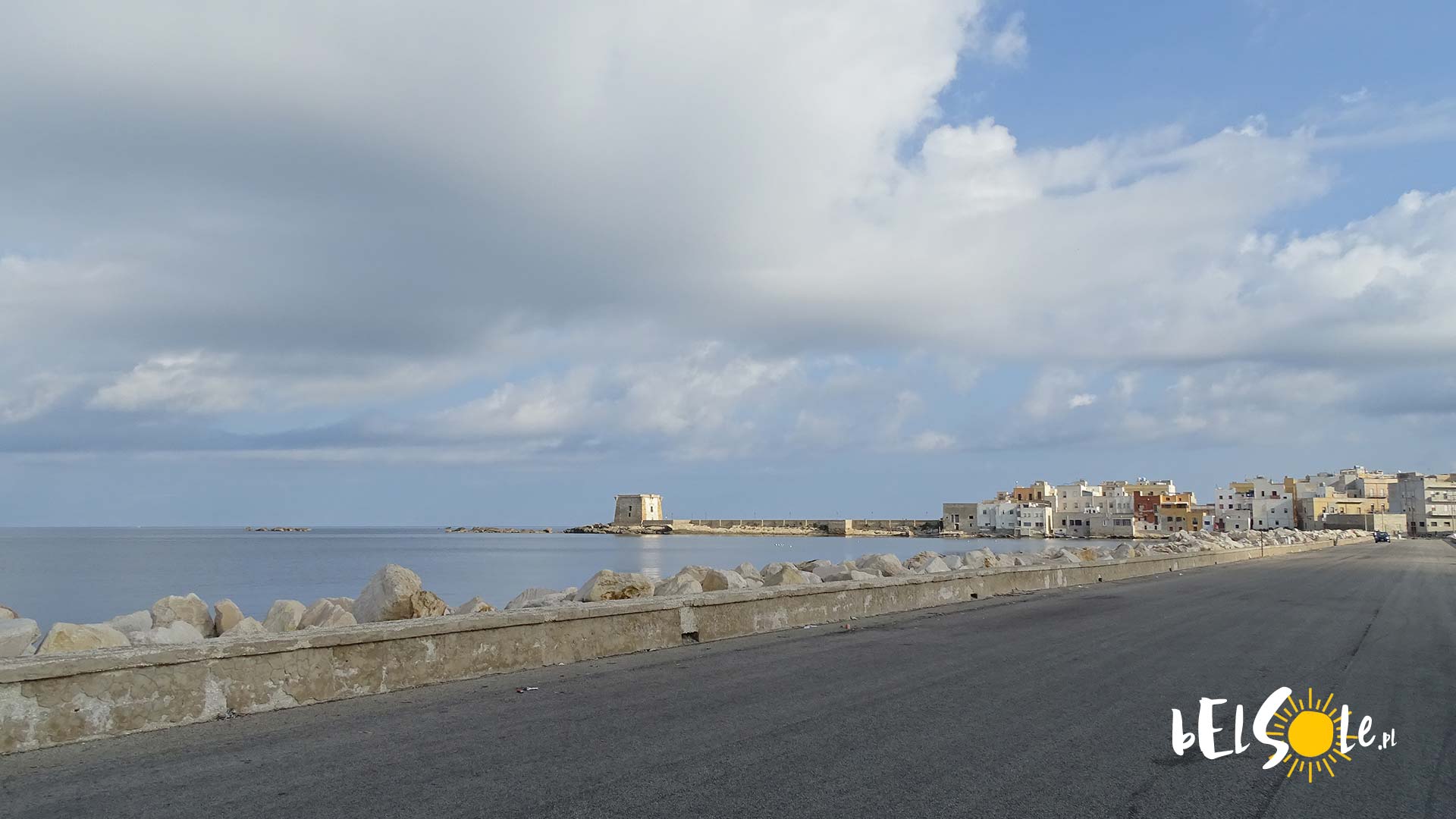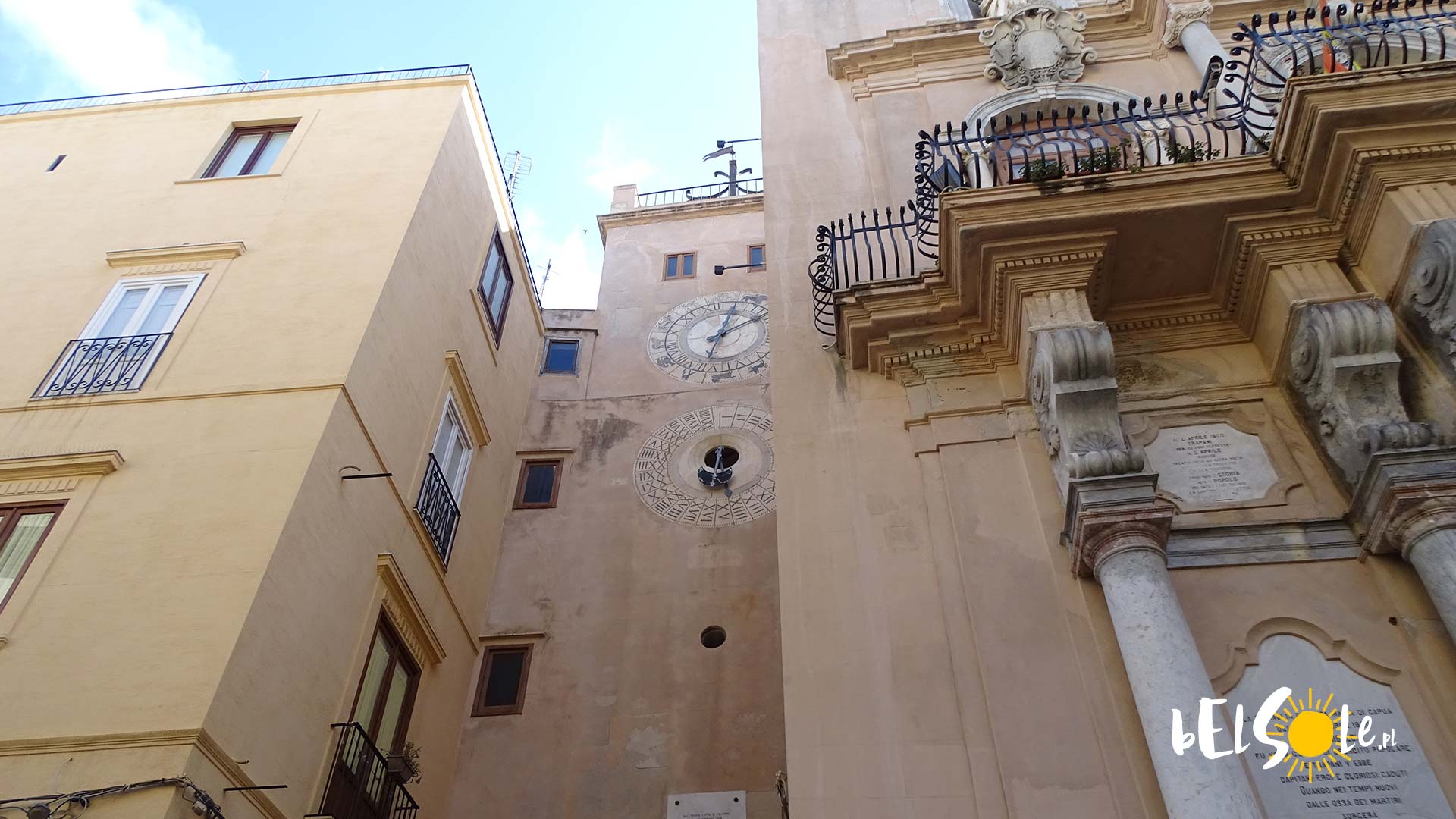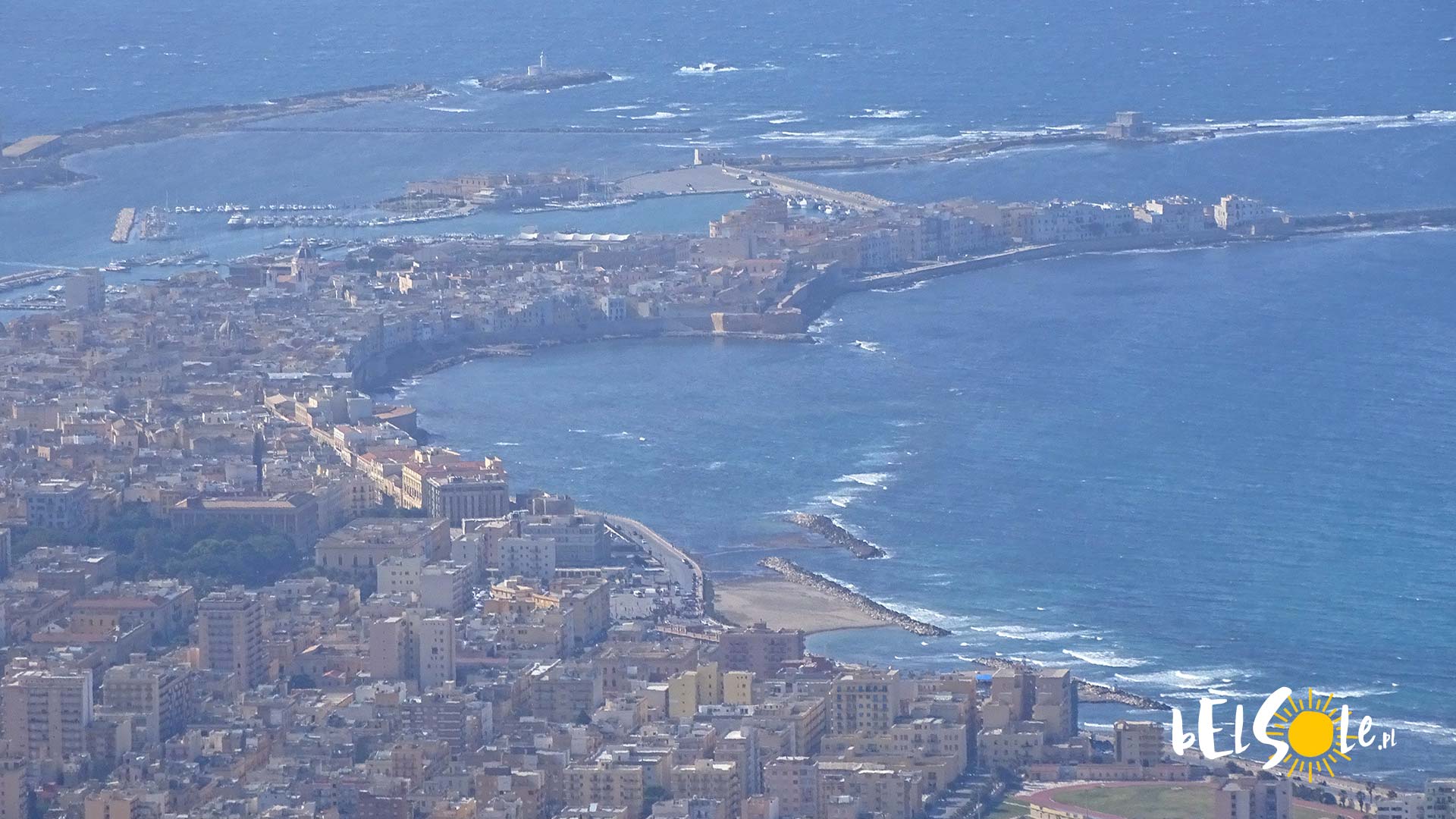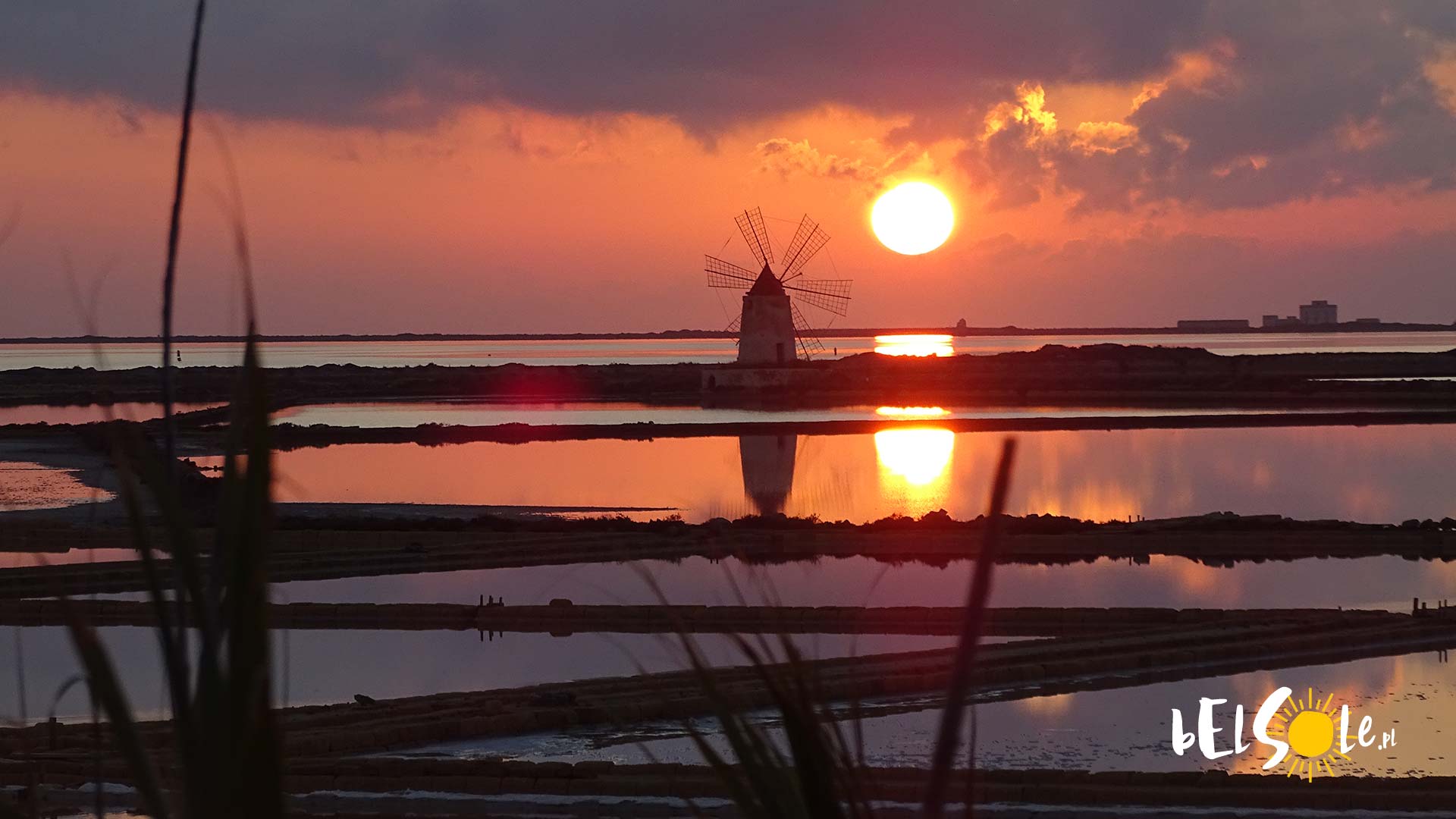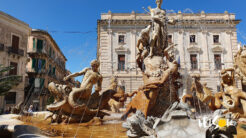A sickle fell down on Earth from Ceres, creating a curve shaped coast, named Drépanon. According to the Greek legend, that’s how Trapani came to be – not a very popular city among the tourists, often underappreciated, although filled with monuments and intriguing places. What to see in Trapani? What attractions await us there? Here’s our list.
Palazzo Senatorio o Cavaretta
When visiting Trapani, it’s hard to avoid the main tourist trail, which is the Vittorio Emanuele. At the very end of the Corso, we’ll find Palazzo Cavarretta. It’s a baroque palace, built in 1672 by Giacomo Cavarretta, which nowadays is referred to as a loggia. The facade’s decorated with figures of Madonna from Trapani, Saint Albert and Saint John. Since the 1827, it became the headquarters of the Trapani state authorities, and earned the name Palazzo Senatorio. A monument you’ll no doubt be passing by a couple of times in Trapani.
Cattedrale di San Lorenzo, the Trapani Cathedral
We already went over the Sicilian Monreale Cathedral, but the cathedrals on the western coast tend to look drastically different. This baroque basilica from the 18th century is located right by the main tourist trail in Trapani (Corso Vittorio Emanuele). Inside, we can admire the painting depicting the crucifixion of Jesus, supposedly painted by Van Dyck. The church entered the works in 1421, in 1740 the building was expanded to the version we can see today – a dome, bell tower and the side naves were added.
Chiesa Colleggio e Convento dei Gesuiti
A baroque church in Trapani, built in 1705, although the works started almost a century earlier, in 1614 by the Jesuits. The insides are richly decorated with marble and moldings made by Bartolomeo Sanseverino. We can also see the marble icon of the Immaculate Conception, by Ignazio Marabitti.
Torre di Ligny
What else to see in Trapani? Going alongside the fortification trail is generally a good idea. The tower at the end of the Trapani’s foreland, separating the Mediterranean Sea from the Tyrrhenian one, was built in 1671, with the goal of defending the island from the corsairs. The idea was brought up by the captain Claude Lamoral I de Ligne, and initially the tower was placed on a separate mini island. In 1806, the mini island was merged with the mainland, in 1861 cannons were added. Nowadays though, we can find a museum there, in which we can find a collection of archeological findings from all of Trapani, like various helmets from the Punic Wars. Entry cost is 1 EUR.
Castello della Colombaia
This ancient fortress is located to the west of Trapani, on a small islet. Originally, it was just the tower, built in 251 BC, during the First Punic War. It has over 30 meters of height so we can easily spot it from the southwestern side of Trapani. It had another name, Colombaia to Torre Peliade – which means the Tower of the Pigeon. It’s speculated that it was a place of worship, dedicated to the Goddess Venus Ericina, whose pigeons were regarded as sacred animals.
Tramontana walls and the coast of Trapani
Trapani, from a strategic point of view, has an abundance of fortifications and defensive buildings. The entire coast is filled with various bastions, towers and castles, all connected with a city wall. Apart from the aforementioned, you can also see a bastion located in the southeastern side of the city walls, Sant’Anna Bastion and the Conca Bastion, all from the 16th century. The Tramontana walls were raised in the same century as the Hispanic domination, the walls are 1 km long and reach from Piazza Mercato all the way to the Bastione Conca.
Porta Oscura
A bell tower, also serving as the oldest gate in all of Trapani, situated right next to Palazzo Cavarretta. Supposedly built by the Carthaginians, as a part of their fortification of the old town. Since 1596, there’s also an astronomical clock.
The Trapani – Erice lift
We already wrote about the lift to Erice, leading from Trapani all the way up to the mountain. A panorama of the whole city is visible from the cabins, but it’ll cost you. One way ticket costs 5.5 EUR. A two way goes up to 9 EUR, there’s also a ticket with 10 charges that costs 24 EUR, a full week ticket for 27 EUR and a month of lift rides will set you back 90 EUR. For the locals it’s a bit cheaper, as they pay 4 EUR and 6.5 EUR respectively.
The beaches of Trapani
There are a few worthwhile beaches around the center of Trapani – mainly Lido Paradiso, by the Dante Alighieri street, located right next to it is Vittorio Emanuele and Lido Rombo. The whole line of beaches is on the northern side and reaches all the way to the edge of the city. If you’re a beach lover, you’ll find plenty of spots for you to sunbathe in. There are also small bars and sunbeds for the tourists. Not all beaches are as highly populated though, some left untouched, even considered wild.
Trapani – Marsala salt pans
The incredibly famed salt pans are located halfway through the path from Trapani to Marsala, we can get there by train or by taxi. The characteristic red-roofed mills look incredible at sunset. The salt pans, which are a part of the 1995’ reserve, take up around 1000 hectares. It’s one of the very few places in Europe where we can see flamingos in action. Another one is the pink lake in Spain.
Map of attractions in Trapani
- Palazzo Senatorio o Cavarretta & Porta Oscura
- Chiesa Collegio e Convento dei Gesuiti
- Cattedrale di San Lorenzo
- City walls
- Torre di Ligny
- Castello della Colombiana
- Beaches
- Main station in Trapani


